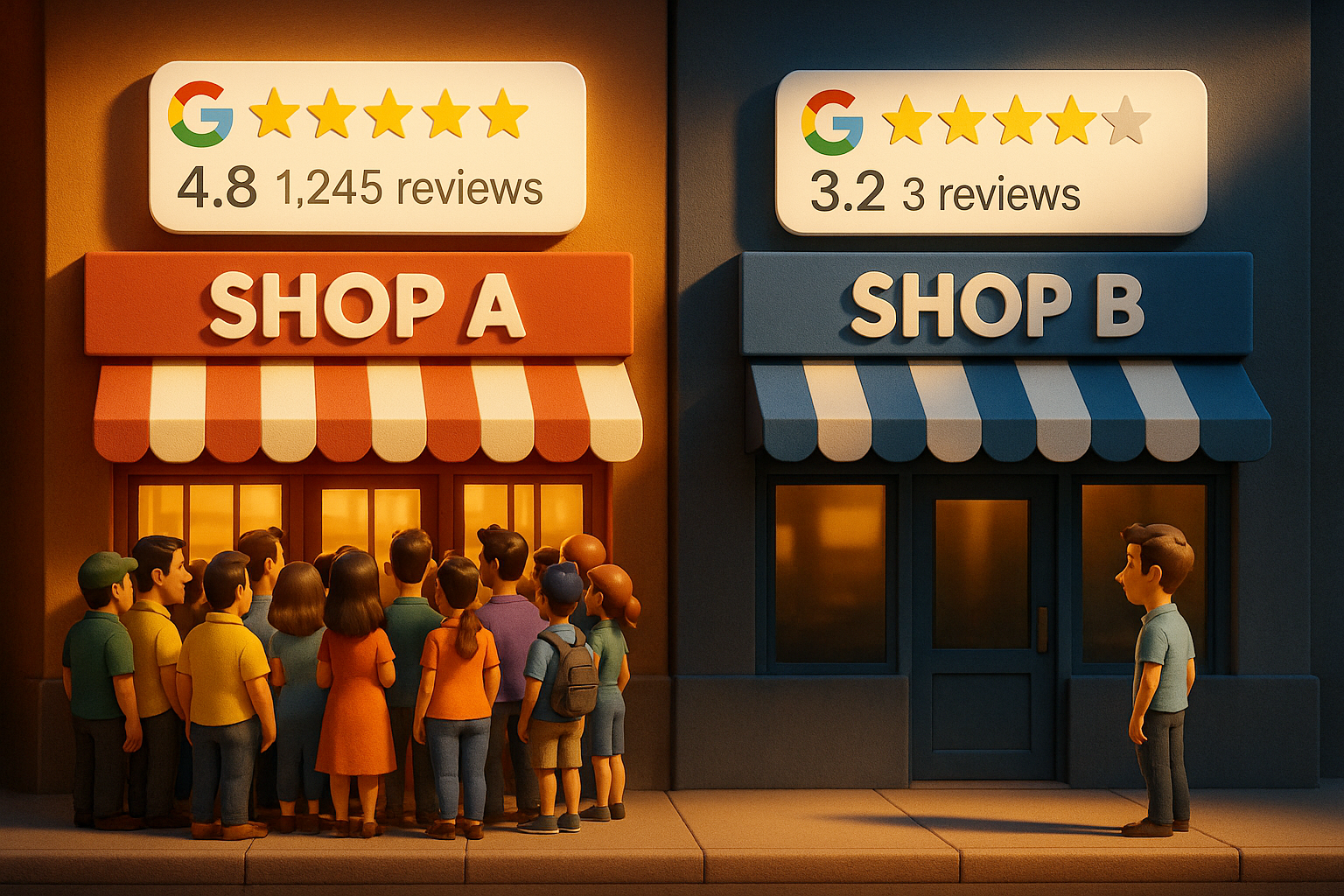Landing Page vs Website: When to Convert Fast vs When to Build Trust
Landing page vs website: which should you use to convert leads and drive revenue?
Every business needs a digital front door, but not all doors are built the same.
Some are
laser-focused, designed to get visitors to act fast. Others are
broad and welcoming, giving people space to learn, explore, and decide on their own terms.
This is where the age-old question comes in: Should you use a landing page or a website?
If you’re running ads, trying to scale leads, or selling anything that requires trust, knowing when to use each can completely change how efficiently you grow.
In this article, we’ll break down the difference between landing pages and websites — not just from a design or SEO perspective, but from a conversion, sales, and operational efficiency lens.
1. Landing Pages: Built for Momentum
Landing pages are like a well-rehearsed sales pitch: short, sharp, persuasive, and engineered to close.
- Single focus, single action. Landing pages are designed to get the user to do one thing: fill out a form, buy now, book a call, claim an offer.
- Message discipline. Every scroll is intentional: headline → value → proof → CTA. There’s no sidebar, no nav menu, no rabbit holes.
- PPC alignment. They work best with Google Ads, Meta Ads, and other paid traffic where intent is already warm or hot.
- Conversion velocity. You catch people at their peak interest and move them through a streamlined decision path.
2. Websites: Built for Trust
Websites, on the other hand, are encyclopedias of your business. They’re not trying to close everyone right now. They’re trying to educate, nurture, and build confidence.
- Content depth. Multiple pages, clear navigation, layered resources, FAQs, case studies, reviews, and stories.
- Catering to mixed intent. Some visitors are comparison shopping, some are researching, and some are ready to buy.
- Perfect for high-commitment offers. Big decisions, like solar installations, or choosing a private school for your child — need more than one headline and a form.
- SEO power. Websites build organic authority, which keeps traffic flowing long after the ads are off.
3. Intent Drives Format
The real question isn’t “landing page or website?” It’s “what’s the user’s intent right now?”
- High intent → direct to landing page → convert fast.
- Low or mixed intent → nurture on website → educate, build trust, then convert.
Matching your content format to user intent keeps your cost per acquisition low and your marketing dollars working harder.
4. Conversion Velocity vs Nurturing Depth
- Landing pages give you speed which is ideal when the offer is simple or the value is immediately clear.
- Websites give you depth which is ideal when the product or service requires understanding, trust, or comparison.
5. Data, Testing & Funnel Orchestration
- Landing pages are easier to A/B test. You can quickly see what headline, CTA, or layout drives conversions.
- Websites provide richer behavioural data. You can track page paths, engagement, and intent signals to build remarketing segments.
- Smart brands don’t choose between them, they layer them.
Example funnel:
- Paid traffic → tailored landing page offer
- Unconverted visitors → remarketing → website case study or value piece
- Qualified traffic → retargeted with a stronger offer landing page
Landing pages give you clean signals. Websites give you a richer map.
6. Sales Team Impact: Volume vs Quality
Here’s the hidden lever most marketers ignore: your sales team’s capacity.
- Landing pages drive high volume, which can be fantastic if you have strong automation or a big sales team to qualify leads. Otherwise, you’ll drown in noise.
- Websites attract lower volume but higher quality. When someone reaches out from your website, they’ve usually done their homework. They’re warm and ready.
Landing pages fill your pipeline fast. Websites fill it smart.
7. The Hybrid Strategy: Best of Both Worlds
The smartest marketers don’t see this as a binary choice.
- Use landing pages to convert high-intent traffic.
- Use your website to educate, filter, and qualify.
- Build remarketing loops between the two.
- Layer in automation to handle the volume intelligently.
Your website builds the brand. Your landing pages build the revenue.
8. When to Use Each
Choosing between a landing page and a website isn’t a design decision.
It’s a strategic move that impacts your marketing efficiency, lead quality, and sales outcomes.
- Landing pages are your revenue accelerators.
- Websites are your trust engines.
- When used together with smart remarketing and automation they become your full-funnel growth machine.
Summary Chart Landing Page vs Website:
Book A Session With A Sydney-Based Digital Growth Expert.
I work with a limited number of clients to keep quality high and focus sharp. If you’re ready to grow and want to see if we’re the right fit, fill out the form and let’s start the conversation.



